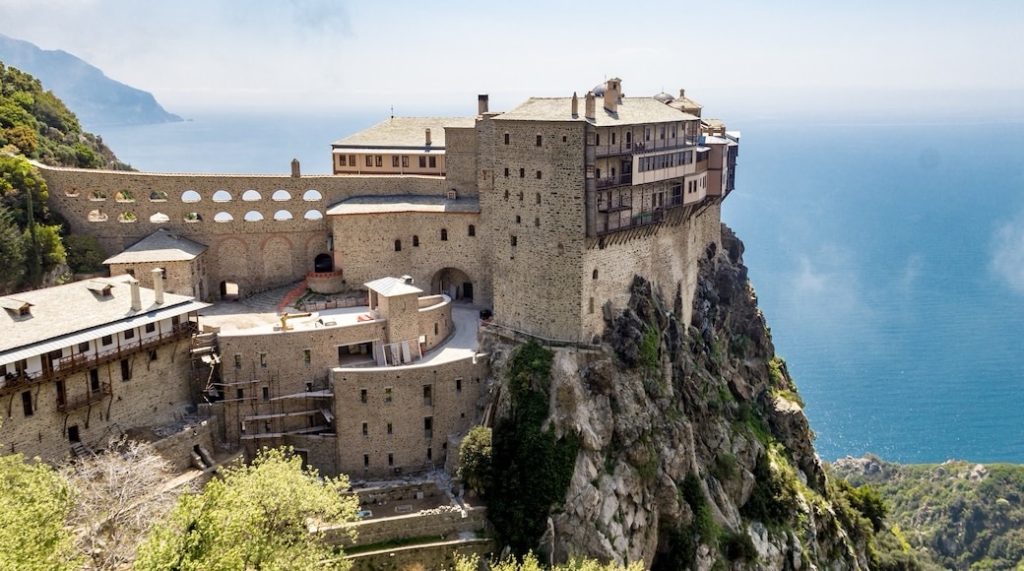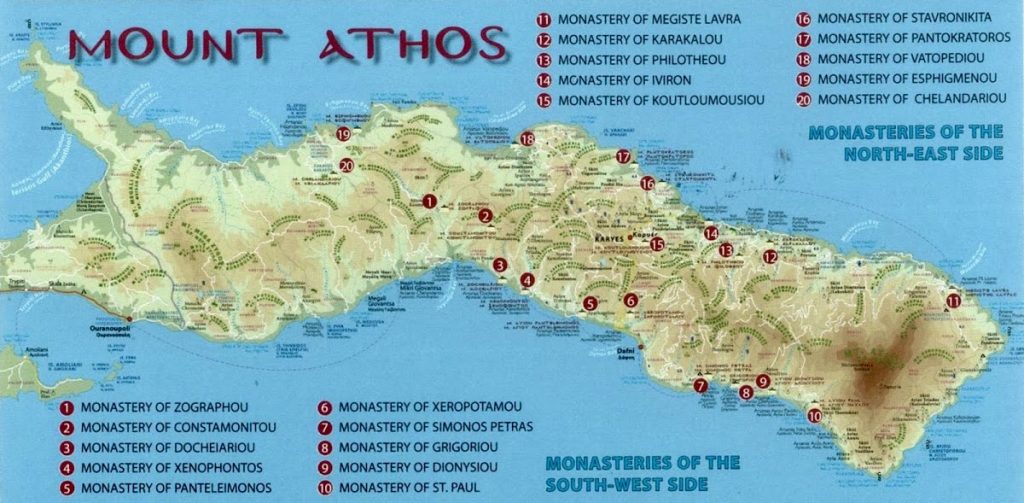
17. Mount Athos
Although I sometimes wake up and wonder what day it is, on a Sunday I always know. The bells start tolling around 7.00 and, with the nearest one just down the road, there’s no going back because they’re then clanging away in one or more of the city’s 24 churches at almost every hour of the day.
I’d say, although wouldn’t dare here, that most just toll rather than peel out anything tuneful. It’s the sort of racket that would have people back home signing petitions but, with around 97% of Greeks identifying as members of the Greek Orthodox Church, even though only about a quarter attend services, you wouldn’t get very far here. It’s part of the fabric of Greek life.
In most places around the world time’s a standard affair, moving in one direction, marked by bells, clocks and calendars, and broadly following the same format of minutes, hours, days and weeks. But wondering what day it is gets more complicated in a part of northern Greece where it can be Tuesday in Thessaloniki, but still Monday 100 miles away on Mount Athos.
It’s a place where standard time’s considered too modern and where, if you ask what time it is, the answer will depend on which monastery you’re in and what the sun happens to be doing at that moment. And you’d only be able to ask if you were a man because, if you were a woman, you wouldn’t be there. Letting women in is considered too risky, so they’re banned.
Mount Athos is a self-governing monastic state, officially part of Greece but operating under its own rules. It’s been a religious sanctuary for Orthodox monks for over a thousand years, with 20 main monasteries and several smaller ones scattered along a 130 square mile peninsula jutting out into the northern Aegean Sea.

For the 2,000 monks who live there time literally marches to a different beat because they follow the Julian calendar, not the modern Gregorian one that most of the world adopted in the 16th to 20th centuries, as Greece did in 1923. Mount Athos never has.
Instead, it stuck with one introduced by Julius Caesar 2,070 years ago, which miscalculates the length of the solar year by about 11 minutes, which may not sound like much, but over centuries adds up. Today, it runs 13 days behind the Gregorian one.
So, while the rest of Greece might be celebrating Christmas on December 25th, the monks are still plodding through Advent and, according to Gregorian reckoning, they won’t hit Christmas until January 7th. And as if a different calendar weren’t enough, many Athonite monasteries also use a system known as Byzantine time that begins not at midnight or sunrise, but at sunset. It’s confusing.
Many years ago, passing through Thessaloniki, I’d considered visiting Mount Athos but was put off by the paperwork. As mentioned, only men can enter and, if you’re under 18, you’ll need to be accompanied by your dad (strictly no mums), but even then you must apply for a permit in advance, issued on parchment and signed by the Holy Epistasia, the monastic governing body. If you’re non-orthodox it’ll cost you €30 and it’s strictly cash only to be paid on the gate. Oddly, according to the official price list, linked to below, families with 4 or more children get in free of charge, which rings alarm bells for me.
The prohibition on women’s been in place for over a thousand years which, according to the Holy Epistasia, is seen as ‘a vital aspect of maintaining the monastic community’s purity and focus’ which, to me, seems a tad disrespectful to women, pure or not. Apparently it’s linked to an ‘incident’ that took place in the fourth century when an emperor’s daughter popped in to have a look around and heard a voice coming from an icon commanding her to leave and never to return, a likely story if ever I heard one. With 2,000 men and 1 woman, I think there must be more to it.
According to media reports a few weeks ago, in late May Mount Athos was the site of a brawl between 2 monks involving garden tools, one struck on the head with a blunt object, with verbal threats and insults issued to 2 others, who were doused in dirty water. One was hospitalised and the cops were informed, although the rugged geography prevented a timely response. Apparently it’s the latest development in a long-standing schism between 2 groups of monks that began over 50 years ago.
Evidently capable of impairing their ‘purity and focus’ themselves, with stuff like this going on it might actually serve the monks well to have a few women on board, although I doubt there’d many keen to hang out with 2,000 self-isolating men, not to mention that you’d never know what time it was or what year you were in.
If you’re a man and still interested in finding out more, including how to apply for a permit, you’ll find all you need to know from the monks themselves via this link.
If you’re a woman, tough!